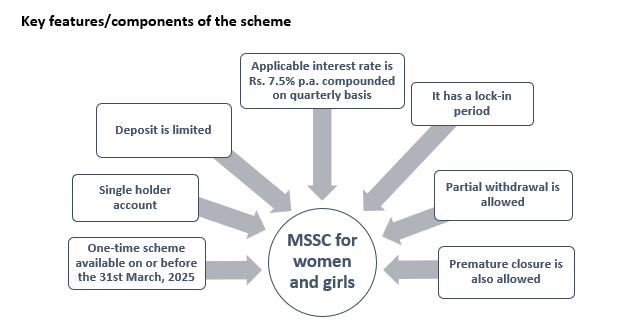Comparative analysis involves comparing a company’s financial performance and key metrics with its industry peers. This allows investors to identify companies that exhibit superior financial strength, efficient operations, and good growth compared to their competitors. Such comparative insights help in selecting companies with relative competitive advantages. Comparing the balance sheets and cash flow statements of various companies within the same industry aids investors in selecting the most financially robust and operationally efficient companies. Companies exhibiting stronger financial health and better cash flow management are often preferred in investment decisions. Comparative analysis assists in risk assessment by highlighting companies with higher financial stability, lower debt, or superior cash flow management. This information aids in diversifying the investment portfolio, allowing investors to spread their investments across industries having positions in financially healthy companies.
Studying an industry to identify the best investment opportunities involves thoroughly analyzing various companies within the sector using comparative analysis. Industry knowledge helps assess risks associated with market fluctuations, regulatory changes, and technological advancements. Understanding industry trends allows investors to anticipate shifts in consumer preferences, technological advancements, and market demands. It helps in evaluating a company’s competitive positioning within the industry, identifying strengths, weaknesses, opportunities, and threats (SWOT analysis). Industry insights aid in identifying high-growth sectors, potentially lucrative niches, and undervalued markets. assists in making strategic decisions such as market entry, product development, and diversification. Investors look for sectors with consistent growth prospects and the market share and positioning of companies within the industry. Industries leveraging innovative technologies often present attractive investment opportunities.
Tools used in Comparative Analysis
Financial Ratios
Financial ratio analysis involves examining various ratios like liquidity, profitability, efficiency, debt, and market ratios. Comparative analysis using financial ratios involves comparing a company’s ratios against industry averages, sector-specific benchmarks, or direct competitors’ ratios.
For More details on Financial Ratios, Click Here.
Common Size Analysis
Common size analysis converts financial statements such as balance sheets, income statements, or cash flow statements into percentages. This makes it easier to compare the financial structures and performance of different companies. Analyzing common size statements over time reveals trends and patterns within a company or industry. It assists in understanding changes in financial structures, such as shifts in asset allocation or revenue streams. Common size analysis in understanding a sudden increase in a specific expense item as a percentage of revenue could signal operational inefficiencies or rising costs. Comparing common size statements against industry averages or competitors helps in benchmarking a company’s performance. It allows for identifying areas where a company might be over- or underperforming compared to its peers. Common size analysis is a valuable tool in comparative analysis, providing a clear and standardized view of financial statements.
Trend Analysis
Trend analysis is a statistical technique used to examine and identify patterns or tendencies in data over a period of time. It involves analyzing historical data to detect any consistent upward, downward, or stable movements, also known as trends, within the dataset. This method is commonly applied in various fields, including finance, economics, marketing, and science, to understand how variables change over time. Visual representation of data through charts and graphs helps in identifying trends more easily. Line charts, bar charts, and candlestick charts are commonly used to display trends in financial markets. Trend analysis helps in identifying patterns, whether upward, downward, or stable trends in the performance of assets or markets. These patterns can reveal valuable insights into the potential future trajectory of an investment. Trends can influence investment decisions by providing context and perspective. If an asset has consistently shown an upward trend, it might signal a potential opportunity. Conversely, a declining trend might raise concerns or prompt investors to reconsider their positions. When comparing multiple investment options, trend analysis allows investors to weigh the historical performance of each option against the others. It aids in selecting investments that align with specific risk tolerances and return objectives. Integrating trend analysis with fundamental and technical analysis helps create a more expanded view, enabling more informed investment decisions.
Comparative Company Analysis Models
Comparative company analysis involves evaluating and comparing different companies within the same industry to make informed investment or business decisions. Several models and methodologies are used in comparative company analysis to assess various aspects of companies.
Discounted Cash Flow
Discounted Cash Flow (DCF) analysis is a method used to evaluate the attractiveness of an investment opportunity by estimating its future cash flows and discounting them back to their present value. In comparative analysis, DCF helps compare different investment options by standardizing their values to a common point in time, enabling a more straightforward comparison. DCF allows for the valuation of different investments by bringing their future cash flows to their present value. This standardization enables investors to compare investments regardless of their size, industry, or other variables. DCF considers the entire projected cash flow stream of an investment, providing a long-term perspective. Comparative analysis using DCF helps in assessing how different investment options might perform over the long term, accounting for potential changes in market conditions, growth prospects, and cash flow variations.
Dividend Discount Model (DDM) and Free Cash Flow (FCF) Model
Dividend Discount Model values a company based on the present value of its expected future dividends. It assumes that the intrinsic value of a stock is the sum of all its future dividend payments, discounted back to the present value. DDM focuses solely on dividends paid to shareholders and works better for companies with stable dividend histories.
Free Cash Flow Model represents the cash generated by a company after accounting for capital expenditures to maintain or expand its asset base. It is essentially the cash available for distribution to all providers of capital (both equity and debt holders). FCF Model values a company by discounting its future free cash flows back to their present value. It involves projecting a company’s future FCF and discounting those cash flows using a discount rate to determine the company’s current value. FCF focuses on the cash available for distribution to investors, creditors, and for reinvestment in the business. FCF considers the flexibility of a company to invest in growth opportunities, repay debts, pay dividends, or perform share buybacks. FCF model is more flexible and suitable for companies with varying dividend policies or those reinvesting heavily in growth. FCF model focuses on the cash available to all capital providers and includes reinvestment needs.
In conclusion, comparative analysis suggests companies with similar fundamentals but varying market valuations. Finding a company with strong financials that is undervalued compared to its peers may present an opportunity for investment as its stock price could potentially rise to reflect its true value. Quantitative analysis often utilizes various valuation models to estimate a company’s intrinsic value. Comparative analysis is essential in selecting the best investment opportunities based on stronger performance, growth potential, and market positioning within the industry.
For More details on SWOT analysis and Porter’s Five Forces Analysis, Click Here.











